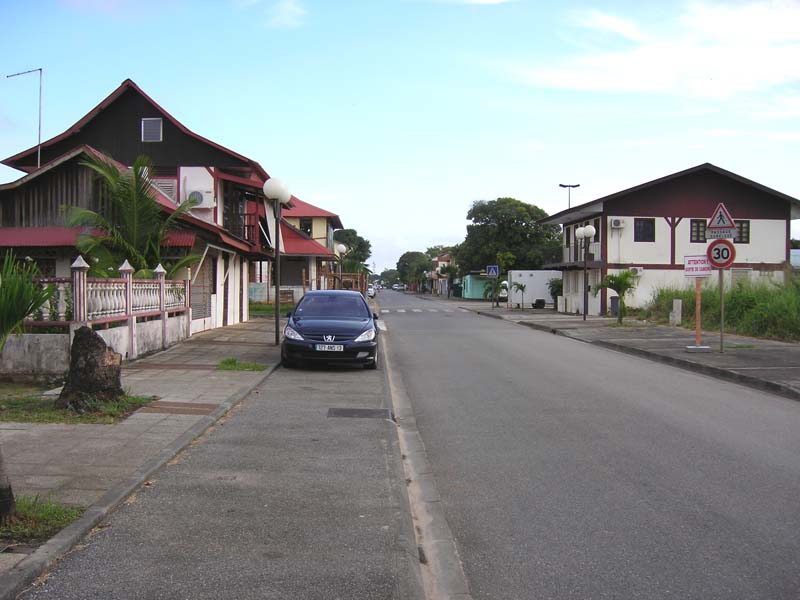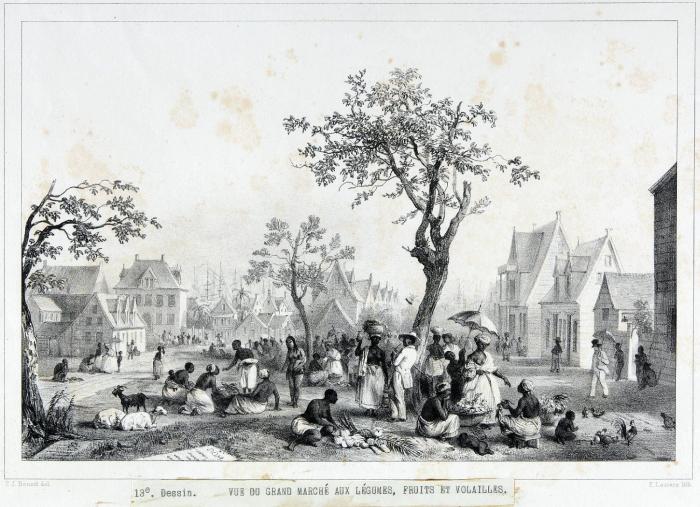|
Surinamese Interior War
The Surinamese Interior War () was a civil war fought in eastern Suriname between 1986 and 1992. The conflict primarily involved the Jungle Commando, a rebel group composed largely of Saramaka (Maroon) fighters and led by former soldier Ronnie Brunswijk, and the Surinamese National Army, commanded by then-army chief and ''de facto'' head of state Dési Bouterse. Background Suriname has one of the most ethnically diverse populations in South America. Its people include those of South Asian (Indian), Javanese, Chinese, European, Indigenous (Amerindian), African (Creole and Maroon), and multiracial descent. The ancestors of the Maroons were enslaved Africans who escaped from coastal plantations between the mid-17th and late 18th centuries and established autonomous communities in the interior. These groups successfully resisted Dutch colonial forces and secured their independence through peace treaties signed with the Dutch in the 1760s. The Dutch, unable to subdue them mili ... [...More Info...] [...Related Items...] OR: [Wikipedia] [Google] [Baidu] |
Suriname
Suriname, officially the Republic of Suriname, is a country in northern South America, also considered as part of the Caribbean and the West Indies. It is a developing country with a Human Development Index, high level of human development; its economy of Suriname, economy is heavily dependent on its abundant Natural resource, natural resources, namely bauxite, gold, petroleum, and Agriculture, agricultural products. Suriname is a member of the Caribbean Community (CARICOM), the United Nations, the Organisation of Islamic Cooperation and the Organization of American States. Situated Tropics, slightly north of the equator, over 90% of its territory is covered by rainforest, List of countries by forest area (percentage), the highest proportion of forest cover in the world. Borders of Suriname, Suriname is bordered by the Atlantic Ocean to the north, French Guiana to the east, Guyana to the west, and Brazil to the south. It is List of South American countries by area, the smalles ... [...More Info...] [...Related Items...] OR: [Wikipedia] [Google] [Baidu] |
1980 Surinamese Coup D'état
The 1980 Surinamese coup d'état, usually referred to as the Sergeants' Coup (), was a military coup in Suriname which occurred on 25 February 1980, when a group of 16 sergeants () of the Surinamese Armed Forces (SKM) led by Dési Bouterse overthrew the government of Prime Minister Henck Arron with a violent coup d'état. This marked the beginning of the military dictatorship that dominated the country from 1980 until 1991. The dictatorship featured the presence of an evening curfew, the lack of freedom of press, a ban on political parties (from 1985), a restriction on the freedom of assembly, a high level of government corruption, and the summary executions of political opponents. Background The Netherlands granted Suriname independence on 25 November 1975. It was marked by social unrest, economic depression, and rumors of corruption. The hastily created Suriname National Army had many non-commissioned officers who tried to unionize and complained about corruption and ... [...More Info...] [...Related Items...] OR: [Wikipedia] [Google] [Baidu] |
Apoera
Apoera, also Apura, is a town in western Suriname. The village has a population of 777 people as of 2020. It owns the community of Tropica. It is the final destination of the Southern East-West Link. north-west on the other side of the Courantyne River lies the Guyanese village of Orealla. The village is home to the Lokono tribe, but has been westernized. Due to the influx of people of Guyana, the languages used are English, and Sranan Tongo. Dutch is rarely spoken and the native language has all but disappeared. According to the oral tradition, Apoera was founded around 1920 by the Gordon family. Geography Apoera is part of the Kabalebo resort in the Sipaliwini District of Suriname. This town is situated on the Surinamese (Eastern) Bank of the river Corantijn and has about 777 inhabitants, originally mainly Ameridians of the Lokono tribe. Apoera, apart from over the river, is also accessible via the road link Zanderij-Bitagron-Camp 52 (the southern east–west link). It ... [...More Info...] [...Related Items...] OR: [Wikipedia] [Google] [Baidu] |
Jenny, Suriname
Jenny is a town on the East-West Link in Suriname Suriname, officially the Republic of Suriname, is a country in northern South America, also considered as part of the Caribbean and the West Indies. It is a developing country with a Human Development Index, high level of human development; i ..., located in the Welgelegen resort of Coronie district. It lies on the mouth of the Coppename River opposite the town of Boskamp, to which it is linked by the Coppename bridge. In the 1940s the Coronie District was released from its isolation when the Saramaccaweg was extended to Boskamp. In 1999, the ferry was replaced with the Coppename bridge. References {{coord, 5, 46, 7, N, 55, 54, 16, W, region:SR_type:city, display=title Populated places in Coronie District ... [...More Info...] [...Related Items...] OR: [Wikipedia] [Google] [Baidu] |
Kourou
Kourou (; ) is a commune in French Guiana, an overseas region and department of France in South America. Kourou is famous for being the location of the Guiana Space Centre, the main spaceport of France and the European Space Agency (ESA). It is an administrative district in French Guiana and the main town there. Geography Some northwest of the French Guianese capital Cayenne the Kourou River empties into the Atlantic Ocean. At the mouth of this river sits the town of Kourou, which is ringed by four hills: Carapa, Pariacabo, Café and Lombard, with the Singes and Condamine mountains not far behind. There are three lakes within the town's city limits: Lake Bois Diable (where one can take lessons in jetski and other aquatic sports), Lake Marie-Claire (the smallest and calmest), and Lake Bois Chaudat (the biggest of the three; also open to sport lovers, especially canoers and kayakers). Long white sand beaches and some rocky outcrops line the town's ocean coast, the riverbank ... [...More Info...] [...Related Items...] OR: [Wikipedia] [Google] [Baidu] |
Paramaribo
Paramaribo ( , , ) is the capital city, capital and largest city of Suriname, located on the banks of the Suriname River in the Paramaribo District. Paramaribo has a population of roughly 241,000 people (2012 census), almost half of Suriname's population. The historic inner city of Paramaribo has been a UNESCO World Heritage Site since 2002. Name The city is named for the Paramaribo tribe living at the mouth of the Suriname River; the name is from Tupi–Guarani languages, Tupi–Guarani ''para'' "large river" + ''maribo'' "inhabitants". History The name Paramaribo is probably a corruption of the name of a native village, spelled Parmurbo in the earliest Dutch sources. This was the location of the first Dutch settlement, a trading post established by Nicolaes Baliestel and Dirck Claeszoon van Sanen in 1613. English and French traders also tried to establish settlements in Suriname, including a French post established in 1644 near present-day Paramaribo. All earlier settle ... [...More Info...] [...Related Items...] OR: [Wikipedia] [Google] [Baidu] |
Moiwana
Moiwana is a Maroon village in the Marowijne district in the east of Suriname. Massacre The village was the scene of the Moiwana massacre on November 29, 1986, during the Suriname Guerrilla War between the Surinamese military regime, headed by Dési Bouterse, and the Jungle Commando led by Ronnie Brunswijk. The army attacked the village, killing at least 35 of the inhabitants, mostly women and children, and burned Brunswijk's house. The survivors fled with thousands of other inland inhabitants over the Marowijne River to neighboring French Guiana. The human rights organisation Moiwana '86 has committed itself to justice with regard to this event. Police chief inspector was murdered in August 1990 while investigating the massacre. Reportedly he was forced out of his car near Fort Zeelandia and shot in the head, with his body left outside Bouterse's office. Other police investigators fled the country, stalling the investigation. The government has stated that it is still ... [...More Info...] [...Related Items...] OR: [Wikipedia] [Google] [Baidu] |
Moengotapoe
Moengotapoe is a resort in Suriname, located in the Marowijne District. Its population at the 2012 census was 579. The village of Moengotapoe was not spared during the Surinamese Interior War The Surinamese Interior War () was a civil war fought in eastern Suriname between 1986 and 1992. The conflict primarily involved the Jungle Commando, a rebel group composed largely of Saramaka (Maroon) fighters and led by former soldier Ronnie ..., because it was the home of Brunswijk at the time. On 22 July 1986, Brunswijk captured the military post near Stolkertsijver and opened fire on the army barracks in Albina. The National Army responded by destroying the temple in Moengotapoe, and capturing all males present. The women and children fled the village. References Ndyuka settlements Populated places in Marowijne District Resorts of Suriname {{Suriname-geo-stub ... [...More Info...] [...Related Items...] OR: [Wikipedia] [Google] [Baidu] |
Delpher
Delpher is a website providing full-text Dutch-language digitized historical newspapers, books, journals and copy sheets for radio news broadcasts. The material is provided by libraries, museums and other heritage institutions and is developed and managed by the Royal Library of the Netherlands. Delpher is freely available and includes as of June 2022 in total over 130 million pages from about 2 million newspapers, 900,000 books and 12 million journal pages that date back to the 15th century. Collections * ''Books:'' 900,000 books, from the 17th century onwards * ''Journals:'' 12 million journal articles from 1800 to 2000 * ''Newspapers:'' about 17 million pages from more than 2 million issues from the Netherlands, Dutch East Indies, Netherlands Antilles and Surinam, from 1618 to 2005. This represents about 15% of the total published newspaper output in the Netherlands in this period. * ''Typoscripts'' for radio broadcasts by the Algemeen Nederlands Persbureau The Algemeen Ned ... [...More Info...] [...Related Items...] OR: [Wikipedia] [Google] [Baidu] |
Albina, Suriname
Albina is a town in eastern Suriname, and is capital of the Marowijne District. The town lies on the west bank of the Maroni River, Marowijne river (Maroni river), which forms the border with French Guiana, directly opposite the French Guianan town of Saint-Laurent-du-Maroni, to which it is connected by a frequent ferry service. Albina can be reached by bus via the East-West Link (Suriname), East-West Link. The distance between Paramaribo and Albina is about . History Albina was founded on 13 December 1846 by August Kappler, and was named after his wife Albina Josefine Liezenmaier (1815-1904). Kappler had left Germany, and journeyed to Suriname. He noticed an abandoned indigenous people, indigenous village near the Maroni river. Later he met friendly indigenous and Maroon (people), Maroon people nearby, and decided to settle in the village after having received permission. By 1913, there was a little town with a medical clinic, and Albina was home to 349 men and 266 women. On 22 ... [...More Info...] [...Related Items...] OR: [Wikipedia] [Google] [Baidu] |
Surinamese Army
The Surinamese Land Forces () is the land component of the Suriname National Army (SNA). It is the largest service branch of the Suriname National Army. Organization The army consists of some 1,000 personnel and has 4 Division (military), divisions. The current commander of the Surinamese Land Forces is Lieutenant Colonel Ashok Jagdew. History Upon independence in 1975, the military of Suriname became Surinamese Armed Forces (). After a coup on 25 February 1980, the armed forces became the National Army (). In 1980 the Surinamese Land Forces was formed as a division of the National Army. Equipment References {{DEFAULTSORT:Surinamese Land Forces Armies by country, Suriname Military of Suriname, Land Forces Military units and formations established in 1980 ... [...More Info...] [...Related Items...] OR: [Wikipedia] [Google] [Baidu] |


